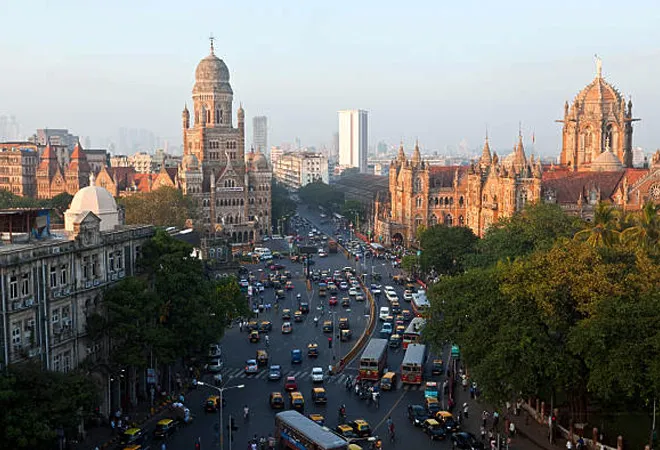
India, as an ancient and living civilisation, is enormously rich in cultural heritage. Its diversity is equally vast, having assimilated thousands of years of diverse cultures. This
richness is visible in its tangible heritage—archaeological sites, monuments, landscapes, artifacts, and other structures of historical value—and its intangible heritage comprising language, music, festivals, dance, social practices, and customs.
The Indian Constitution casts a responsibility on the State to protect and conserve heritage.
Article 49 states, “It shall be the obligation of the State to protect every monument or place or object of artistic or historic interest, (declared by or under law made by Parliament) to be of national importance, from spoilation, disfigurement, destruction, removal, disposal or export, as the case may be.”
Article 51 A (f) widens the responsibility and directs every citizen to contribute to heritage preservation. It states: “It shall be the duty of every citizen of India to value and preserve the rich heritage of our composite culture; and (g) to protect and improve the natural environment including forests, lakes, rivers and wild life, and to have compassion for living creatures.”
The National Monument Authority is charged with the grading and classifying of protected monuments and areas. A further step that the country took for heritage was when it became a signatory to UNESCO’s World Heritage Convention for the protection of global and national heritage.
In the backdrop of the Constitution, a number of national laws have been passed in regard to heritage conservation. The
Ancient Monuments and Archaeological Sites and Remains Act 1958 provides for the preservation of ancient and historical monuments, archaeological sites and remains of national importance. It stipulates the regulation of archaeological excavations, the protection of sculptures, carvings, and other like objects. The National Monument Authority is charged with the grading and classifying of protected monuments and areas. A further step that the country took for heritage was when it became a signatory to UNESCO’s World Heritage Convention for the protection of global and national heritage. Besides, most states have also enacted heritage laws.
We, therefore, have
nationally protected monuments numbering around 3,650 that are looked after by the Archaeological Survey of India (ASI), functioning under the Ministry of Culture and state-protected monuments that are administered by the directorates of state archaeology. Together, they protect about
10,000 structures, which form a miniscule fraction, though the most significant, of the country’s total heritage.
To further expand the effort towards heritage conservation, some major Indian cities have also stepped in to make their
own contribution. They have prepared City Heritage Lists that comprise such heritage sites that neither figure as national heritage nor fall in the category of state heritage. However, they have considerable local significance. Cities have also framed their own regulations with state approval for the conservation of local heritage. Mumbai was the first city to come up with such a list in the mid-1990s. Several
cities have followed suit that include Ahmedabad, Jaipur, Bengaluru, Pune, Hyderabad, Chandigarh, Puducherry and many others. Heritage included in city lists are generally graded into Grade I, Grade II, and Grade III structures, depending on their significance in terms of heritage. It is these local heritage lists and strategies for their protection that are the concern of this article.
Heritage included in city lists are generally graded into Grade I, Grade II, and Grade III structures, depending on their significance in terms of heritage.
Many of the city heritage lists have several hundred pieces of heritage listed. These contain both public and private properties and many of these are being expanded though the addition of more structures. Many forces are at work that are pushing for their expansion. Real heritage lovers, conservation architects, local political pressures and individual interests—all of these force work towards such expansion. And finding structures that have heritage features and heritage value are not very difficult , given the long existence of many Indian cities. While it is easy to compile heritage pieces into lists, the burden of preserving such heritage is enormous and raises questions of variety, selection, volume, and finance and reconciling heritage conservation with future development, amongst others. Therefore a careful strategy that preserves heritage in the best possible manner without becoming an albatross around the necks of cities needs to be adopted.
The first fact for cities to realise is that all of heritage cannot be preserved. In the case of many Indian cities, with so much of the past behind them, old structures are plentiful and many of these are bound to vanish over time. Therefore, merely age cannot determine a decision on preservation. The heritage piece must have an extraordinary significance in some way (beauty, pride, architecture) that would recommend its conservation. Such a considered view while recommending heritage listing does not seem to be always kept in mind at the local level.
Furthermore, in most city heritage lists, there is an overwhelming emphasis on built heritage and architecture. A
study carried out of Surat heritage, for instance, revealed that there was a significant focus on monuments. A broader urban geographical context that integrates the
multi-layering of cultural and natural values was overlooked. Within architecture, there is an overemphasis on physical characteristics of design, construction, or form. While it is true that in many ways architectural heritage is the most tangible of the lot and has huge tourist attraction, there are other aspects of both tangible and intangible heritage that have high significance. Therefore, a proper balance amongst other varieties of heritage ought to be observed. As a guide, one could use the philosophy underpinning the UNESCO’s
World Heritage List (WHL). It divides its heritage selection into cultural, natural, and mixed sites. Cultural heritage comprises historical buildings and archaeological sites, sculpture, and painting. Natural heritage includes sites of exceptional natural beauty, exceptional biodiversity, habitats for rare and endangered animals and plants and such things of rare natural significance. Mixed heritage sites contain elements of both natural and cultural significance and the WHL maintains a
rough ratio of 3 to 1 for the sites.
The heritage piece must have an extraordinary significance in some way (beauty, pride, architecture) that would recommend its conservation.
In terms of architecture, there is a propensity to push into city listing a very large number of similar pieces. However, only the best examples need to be preserved since a particular kind of architecture prevailed historically during a period leading to numerous structures of the same architectural type. An identical view needs to be taken in regard to precincts. Selective, rather than mass preservation is called for.
Due care needs to be exercised while stepping beyond public heritage sites and getting into listing of private properties. While the Indian courts have approved such listing, one needs to remember that such listing encroaches on the rights of private persons or families and restricts them from the full use of their property. Therefore this must be resorted to in exceptional cases where loss of such heritage properties would be a great heritage loss. This is more so since no municipal body is in a position to compensate private owners. The grant of Heritage TDR (transfer of development rights) as an incentive to the owners has been attempted by some cities but it has not been a very satisfactory solution.
Finally, listing too many properties without requisite funds and adequate administrative machinery to police them is not wise. Indian ULBs are financially fragile and are generally not aided for the conservation of heritage by either the state or the Centre. Therefore conserving and governing heritage must come out of its own municipal resources. While heritage has great significance, there are other and more onerous responsibilities of municipal bodies that fall in the category of obligatory duties. This background has to be kept in mind by the ULBs. All effort needs to be made to see that ULBs do not pile up unfunded mandate upon themselves.
The views expressed above belong to the author(s). ORF research and analyses now available on Telegram! Click here to access our curated content — blogs, longforms and interviews.



 India, as an ancient and living civilisation, is enormously rich in cultural heritage. Its diversity is equally vast, having assimilated thousands of years of diverse cultures. This
India, as an ancient and living civilisation, is enormously rich in cultural heritage. Its diversity is equally vast, having assimilated thousands of years of diverse cultures. This  PREV
PREV


